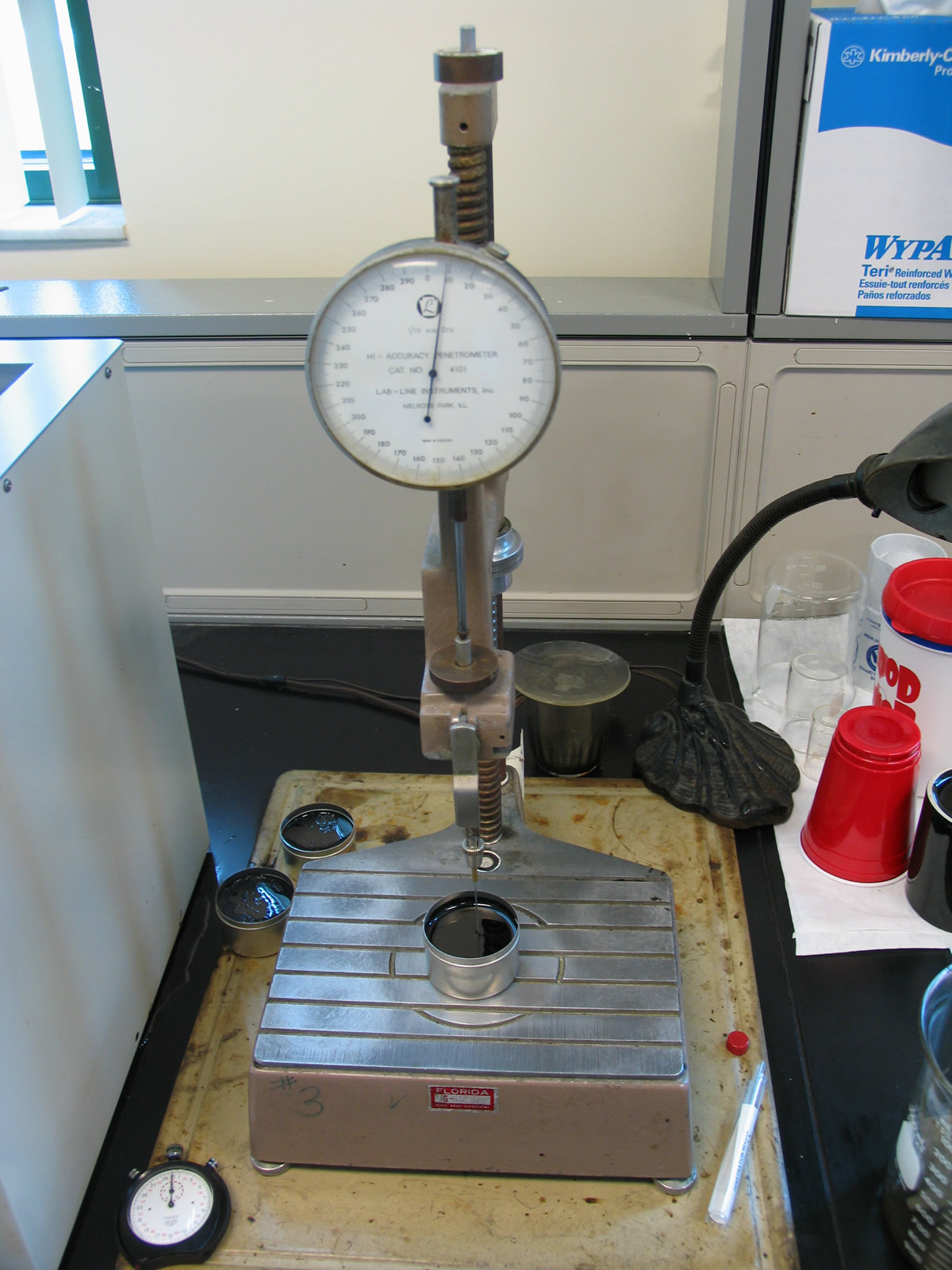Aside from chewing, the penetration test is the oldest asphalt test. In 1888, H.C. Bowen of the Barber Asphalt Paving Company invented the forerunner to the penetration test, the Bowen Penetration Machine (Halstead and Welborn, 1974[1]). It’s basic principle, and the basic principle of the penetration test, was to determine the depth to which a truncated No. 2 sewing needle penetrated an asphalt sample under specified conditions of load, time and temperature. In 1915, ASTM even went as far as specifying the brand of needle (R.J. Roberts Parabola Sharps No. 2) (Halstead and Welborn, 1974[1]).
Basic Procedure
The current penetration test (Figure 1), first published in 1959, describes the following basic procedure:
- Melt and cool the asphalt binder sample under controlled conditions.
- Measure the penetration of a standard needle into the asphalt binder sample under the following conditions:
- Load = 100 grams
- Temperature = 25° C (77° F)
- Time = 5 seconds
The depth of penetration is measured in units of 0.1 mm and reported in penetration units (e.g., if the needle penetrates 8 mm, the asphalt penetration number is 80). Penetration Grading is based on the penetration test.

Standard Test Methods
- AASHTO T 49 and ASTM D 5: Penetration of Bituminous Materials
- Halstead, W.J. and Welborn, J.Y. (1974). History of the Development of Asphalt Testing Apparatus and Asphalt Specifications. Asphalt Paving Technology: Proceedings, vol. 43A. Association of Asphalt Paving Technologists Historical Session., 26 February 1974. Williamsburg, VA. pp. 89-120.↵
